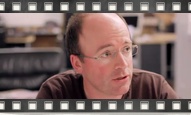2002: Trademarking a sticky situation
A number of Kiwi bloggers found themselves in a sticky situation when the owner of a certain brand of adhesive tape set the lawyers on them for daring to... talk about their products.
Track of the Year 2002

The Clean - Whatever I Do It's Right (The Clean - Anthology, 2002)
The Clean achieved a huge degree of success in 1981 completely on their own terms without having to concede to industry norms at all. Their success was won on the back of a grass root following that coalesced into a formidable market for New Zealand and alternative music in the 1980s. Intelligent, talented and confident in the value of their music and how they presented it but always humble and self-effacing as well. “Whatever I do it’s right, whatever I do it’s wrong”. - Roger Shepherd
[ Watch Video ]
Track of the Year by Records
Letters from a lawyer spark protest
Relations between businesses and consumers had been relatively quiet on the Kiwi front for the majority of the Internet's formative years – possibly because very little retail business was actually done online.
A few early attempts at retailing anything and everything had sprung up (and mostly disappeared as quickly), such as Flying Pig. Certain markets such as music had also forged an early path – but even by 2004, very little was being sold online. In fact, Nielsen NetRatings’ surveys suggested that only 19% of us had purchased something online during the previous year, with a few percent more using the Web to research offline purchases.
Even still, in 2002, the Web was gaining enough influence over consumer behaviour to scare some brands and businesses - some into positive action, others less so. One such brand was Sellotope®. A number of bloggers opened their post one day in June to discover a letter telling them that their websites were infringing trademarks by referring to the product without displaying the correct trademark symbol. They were informed that the references were to be removed or modified with the addition of the registered trademark symbol or further action would be taken.
Social media by any other name
Just five years later, businesses would be doing everything they could to get consumers talking about their products and crafting elaborate ‘social media’ strategies to encourage customer engagement.
But in 2002, the legal thinking was sound, if somewhat perplexing to many who received the letter. Under New Zealand's trademark law, if a brand name is repeatedly used to refer to a type of product rather than a specific brand, it becomes generic and can no longer be owned.
In everyday conversation this happens all of the time. Until the Internet however, this kind of relaxed chatter had no permanent record that could be referenced when evaluating trademark ownership. Blogs and online forums, personal websites and diaries were now all open to be trawled by trademark lawyers for competing brands.
The reaction from those who received the letters was overwhelmingly negative and posts popped up mocking the lack of foresight shown by the company. This meant that those who had received the letters could find each other and, behind the scenes, the more organised among them made a formal objection. A site mocking the brand dubbed ‘Smellotape’ was launched, quickly making its way around online and offline media. Consumer activism through social media would be the bane of many businesses in a few years - the owners of Sellotape® were one of the first to learn its lessons.
The brand backed down from what they initially called their ‘education’ campaign, but for some, a visible rift now existed between business and the consumer online. Many also noticed for the first time that the average Kiwi was more powerful thanks to the Internet.
The rise of cyber crime
Consumer distrust in both business, and the Internet itself was beginning to grow as incidents of "cyber crimes" such as hacking, cons and spamming were becoming more prevalent - simply due to the greater number of kiwis online to be targeted. In 2002 the "Crimes Amendment Bill (no 6)" was in the middle of 3 years of debate in Parliament - not becoming law, and making hacking illegal, until July 2003.
More prevalent still was a growing amount of misinformation online, with more experienced Internet users becoming tired of so called "newbies" forwarding on prank emails - some of which had been in circulation since the earliest days of Usenet.
Dangers of blogging exposed
Overseas, blogging seemed even more dangerous when web designer and graphic artist Heather Armstrong was allegedly fired for writing satirical articles on her blog about her employer. She posted after the event, "My advice to you is BE YE NOT SO STUPID".
Despite this, 2002 was the year that blogging really started to take off, both overseas and locally, as tools like Blogger and LiveJournal made it easy for anyone to start their own. Many blogs started at this time merely for personal amusement, would go on to become businesses a few years later as the web recovered from the first bubble. In New Zealand, these included Richard Macmanus's ReadWriteWeb (2003) and Russell Brown's Public Address (2002).
With blogging came commenting. And with commenting came anonymous comments. And with anonymous comments came trolls.
Online shopping for the mature
Bloggers were typically those who were relatively comfortable with the Internet, had been poking around its corners for some time and likely knew the reaction ‘putting themselves out there’ would have. The same went for online shopping. Studies over the past decade have identified several factors that influence whether an individual will open their wallet online, one of the strongest appearing to be how long one has been using the Internet. Five years is posited as being enough to drive sufficient comfort and, in 2002, that meant that only the early adopters and first wave of local netizens who came on when ihug, Clear, Xtra and the mainstream ISPs launched, were ready.
According to Nielsen, for those primed for online shopping, the most popular categories were ‘travel, books and magazines, entertainment and movie tickets’. Air NZ and travel sites were yet to invent the discount mechanisms such as Grabaseat that would become many a Kiwi’s homepage, but they were still one of the hottest categories.
Shopping for jobs online was also increasingly popular. The local pioneer was NZ Job, launched in 1998 who has a number of competitors by 2002, including Seek that acquired it in 2004. Years later, the trend for blogging and for seeking jobs online would collide as we realised we had to worry about our digitally represented reputations to ensure we scored that job.
A theme that had emerged in the late ‘90s was evident in the online shopping or interactions of 2002 – disintermediation – or put simply, cutting out the proverbial middleman. Whether Air NZ selling us tickets directly instead of a travel agent or businesses listing their jobs directly on NZ Jobs, Seek et al, it was to be a dream unrealised as travel and recruitment agents found their digital footing over the next years.
Helping businesses find their place in the emerging online world was part of the role of a number of business incubators that emerged around the country in the early 2000s. From these a number of Internet startups would develop that would be both nationally and Internationally successful by the decade's end.
Online government steps up

Government interest in high-speed research network
Lawrence Zwimpfer’s "Collaborating at Speed" report urgently recommends that the Government backs a gigabit speed nationwide national science and education network... but is ignored.
2002 was the year that central government put its foot down over the way its own agencies were using the Internet. A new version of the government portal was launched to provide central access to key information and services across the sector by linking to various agency's sites.
To ensure that these disparate sites shared some similarity in experience, they issued Government Web Guidelines that focused on accessibility – ensuring that site visitors, regardless of physical disabilities or older technology, could interact with the site.
Loved and loathed by the country's web developers tasked with implementing them, the Web standards have since seen multiple revisions – as have the sites to which they apply – some more successfully than others.
Unfortunately Government support for a high-speed network, recommended a number of reports at the time, is less evident. Dr Neil James, chairman of the non-profit Next Generation Internet New Zealand (NGN-NZ), warns that the IT industry will suffer unless links are forged with the global Internet2 network, claiming that the research community is already hindered by a lack of affordable high-speed bandwidth.
What were your
Kiwi Websites of the Year?
Tomorrow: Websites were starting to cost a lot of money to make - just buying the right domain name for one cost $1 million dollars.
All
Anecdote
Event




